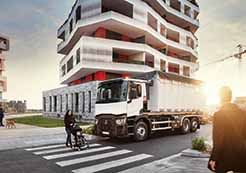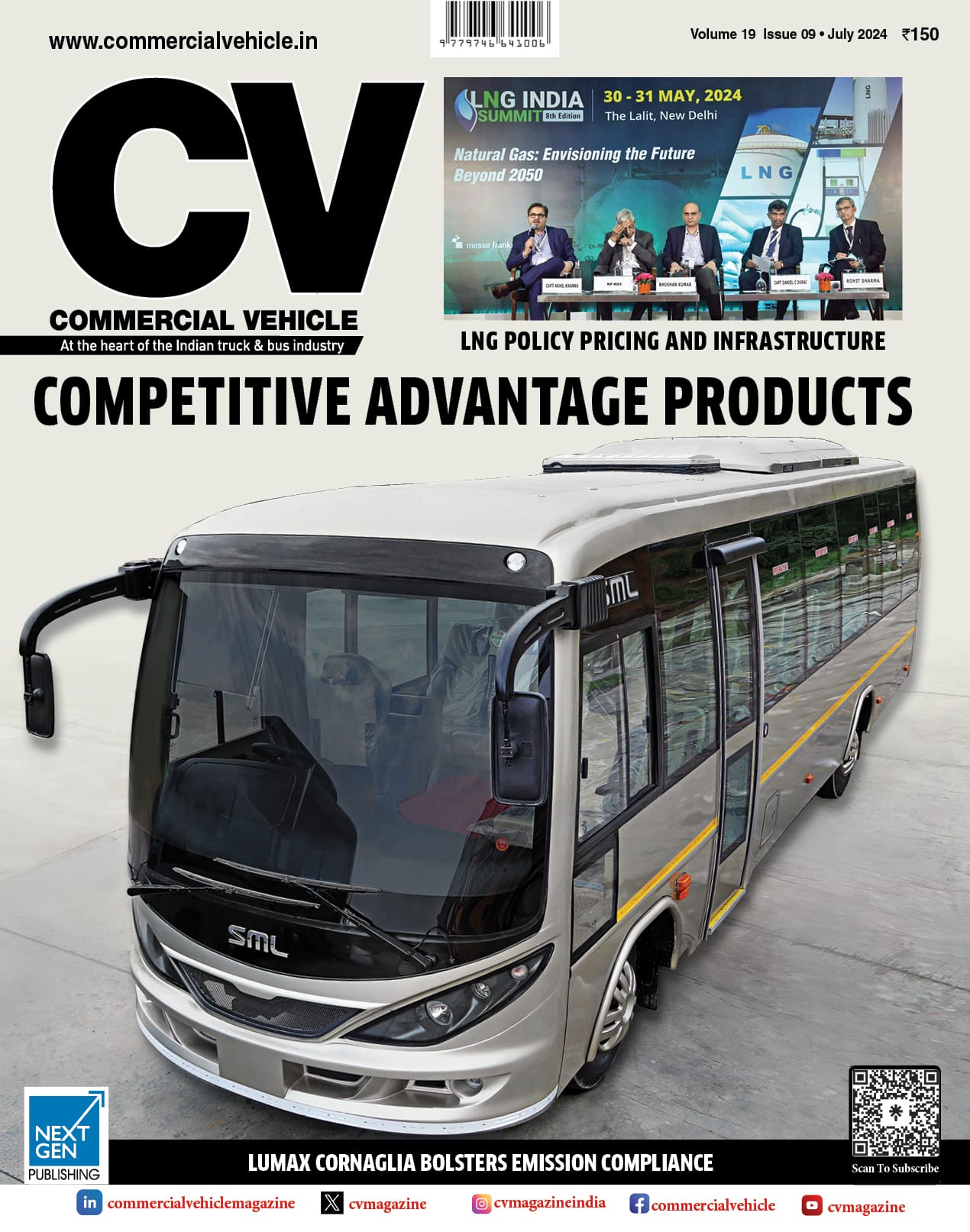Renault Trucks has improved protection for road users.
Team CV
The integration of trucks into the increasingly dense traffic of large urban areas and the development of soft modes of transport is creating a need to pay more attention to safety aspects. Accidents involving trucks and other road users are not uncommon in many parts of the world. An endeavour to continuously improve the safety of city-dwellers has Renault Trucks focusing on drivers and their loads in a bid to improve safety in what is often termed as a rapidly shifting scenario concerning the rising population of vehicles and human beings. Already equipping its vehicles with a variety of safety systems, Renault Trucks has armed its C and K range of trucks with new features.
These concern construction trucks especially, and given their proximity to other urban road users. Stressing on designing and developing systems that are simple, competitive and practical, the CV maker has come up with emergency parking brake application (anti-runaway mode), which reduces the risk of unexpected vehicle movement when the driver leaves the cab. Upon sensing that the driver has left the cab, the braking system automatically mobilises itself to avoid the truck from moving away. To improve the direct vision of the truck driver, Renault Trucks has designed and developed a passenger-side vision door. It allows the driver to see any user on the road, and makes an apt offering for cities like London where much encouragement towards enhancing the safety of road users emphasised upon. The Transport for London (TfL) has come out with an interim Direct Vision Standard (DVS).
Expressed Nigel Butler, Commercial Director, Renault Trucks (UK), that the safety of vulnerable road users is best secured by a combination of direct vision and driver aids. The need is for a scheme that offers a pragmatic and achievable way to secure the safety of vulnerable road users, while protecting the economic movement of goods and the viability of our customers’ transport businesses. Interestingly, the passenger-side vision door is aimed at trucks that perform urban duties in the construction and municipal sectors. Trucks such as construction tippers and refuse trucks.
As efforts are being made by Renault Trucks to improve the driver vision, a particular mention is necessary of the Renault D day cab. It is the lowest entry truck in the manufacturer’s model range, and is the result of a collaboration with Veolia as part of a five-million Pound investment in improving driver direct vision while increasing productivity for multiple collection operations. Veolia undertakes more than 100 refuse collections in a day in the UK. In the area of improving the in-direct vision of a truck driver, Renault Trucks has invested in advance camera technology, which includes the placement of surveillance cameras around the vehicle. Images from the road are displayed on the Roadpad+ screen. To further protect the road users, the CV major has also developed detectors. These are located on the vehicle’s exterior, on the opposite side to the driver. The driver receives an audible and visual alert in the cab the moment the detectors detect the presence of another road user near the truck. An external user alert speaker warns vulnerable road users when the vehicle is about to manoeuvre on the opposite side to the driver. The alert speaker also warns when the vehicle is reversing, and when the driver is using the vehicle’s equipment arm.
Adding to the plethora of safety gadgets like Automated Emergency Braking System (AEBS), Forward Collision Warning (FCW), Lane Departure Warning System (LKS), Adaptive Cruise Control (ACC), Electronic Stability Control (ESC) and Electronic Parking Brake (EPB), which engages automatically when the engine stops, Renault Trucks has armed its vehicles with two visual indicator repeaters. These complement the loudspeaker for road users with hearing loss or for those who are wearing headphones! Most of all, Renault Trucks has equipped its construction truck range with off-road mode and manual accelerator as standard to enhance operational safety as well.

































